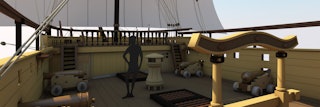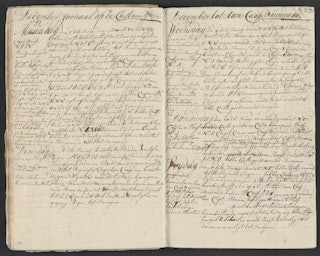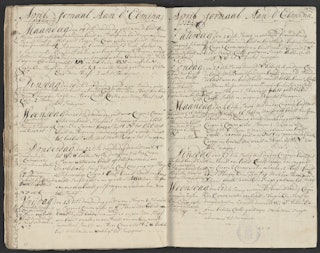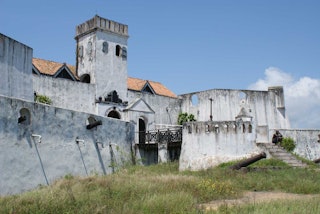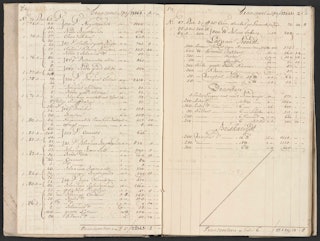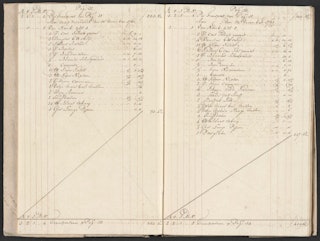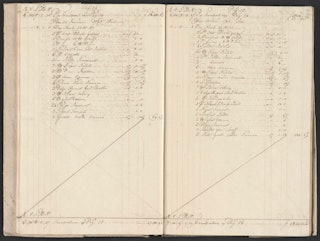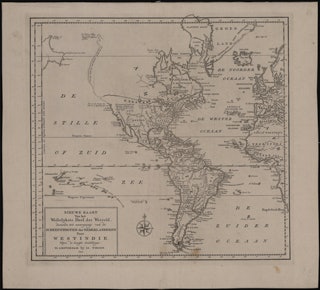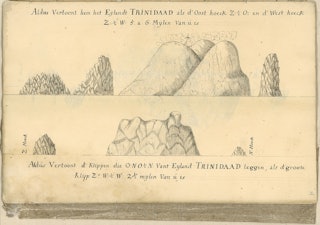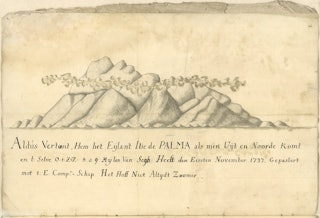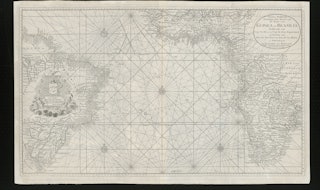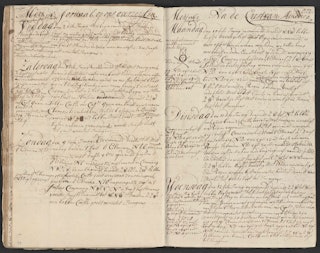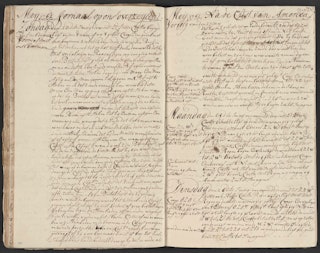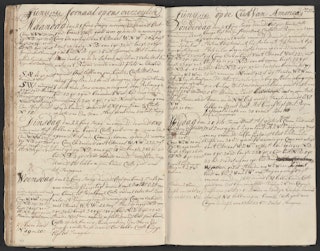4.1 Bartering
Introduction
The Unity mostly traveled to the Windward or Upper Coast, the current Liberia, because prices here were low. Once The Unity arrived to the Windward Coast, a cannon shot was fired. This was the sign trading could begin. The Africans sailed to The Unity with trade goods, such as rice, water, gold, ivory and slaves. The food, goods and people were, amongst other things, traded for ammunition, weapons, knives, textiles and alcohol. In The Unity’s trade journal they kept track of exactly which goods were traded for objects and humans.
Documents
Worksheets
- Introduction Lesson 4.1 Trade
- Lesson 4.1 Trade – Math
- Lesson 4.1 Trade – Language
- Lesson 4.1 Trade – WO
Extra
Discussion about then and now
You can find instructions about conducting a discussion in the Manual for Worksheets.
Topics that may provide an opening for a discussion about slave trade
Slave trade
The slave trade from Africa to the America’s and the Caribbean was called the trans-Atlantic slave trade. These slave transports were also part of the so-called triangle trade: ships from Europe sailed with cargo to Western Africa, the goods were traded for Africans (and other products such as ivory and gold), the Africans were transported across the Atlantic Ocean to the West Indies where they were sold to work as slaves on the plantations. The ships returned with goods from Africa and from the plantations in the West Indies to Europe.
The peak of the triangle trade was in the eighteenth century. Trans-Atlantic slave trade took place between 1500 and 1870 approximately. In that period the Europeans transported roughly 12 million Africans from Africa to the America’s and the Caribbean. The Dutch were responsible for approximately 5% of the total trans-Atlantic slave trade: in the seventeenth through the early half of the eighteenth century they transported circa 600.000 African, approximately half were transported by the West India Company. The passage from Africa to the West Indies was a living hell for the Africans. Many of them did not survive the horrific passage. In total circa 460.000 of the Africans transported by the Dutch reached their destination. The Netherlands officially abolished slave trade in 1814.
The passage from Africa to the West Indies, the Middle Passage as it is now called, was the largest forced migration in history and has been declared a crime against humanity by the United Nations.
Then:
Many people accepted slave trade until well into the 19th century. A lot of money was earned, which people found important. There were also people who were against slave trade. Such a person was clergyman Bernardus Smytegelt (1665-1739) from Middelburg, the Netherlands. He found slave trade ‘thievery’, steeling people. And steeling was not allowed. So he disapproved of human trafficking. Clergymen in other countries also committed themselves to ban slave trade. Such a person was clergyman John Wesley (1703 – 1791) from England. He too preached against slave trade and wrote pamphlets protesting slave trade and slave traders.
- What do you think of the proposition that human trafficking is theft?
- How would you describe slave trade?
- Can you compare human trafficking then to human trafficking now? Why yes/no?
- In a time that slave trade was considered ‘normal’ and many people earned money with it, the Clergymen Smytegelt & Wesley dared to speak out against it. What do you think of this?
- In a time that slave trade was accepted by most persons, would you dare to protest against it?
Now:
Nowadays slave trade is illegal. Human trafficking is considered a crime against humanity. That does not mean human trafficking no longer exists. People are still traded. There are special organizations that ask attention for human trafficking and plan and take action to fight against human trafficking. An example of this is Stop the Traffik.
- Have you ever thought about human trafficking?
- What do you think about the fact that human trafficking still exists?
- Do you think it is justified that human trafficking is considered a crime against humanity and that you can be punished for this?
- Should human traffickers be punished? If no, why not? If yes, why and what punishment should they receive?
- What do you think of the organizations who draw attention to the existence of human trafficking?
- Would you join one of these organizations or would you join activities against human trafficking?
- What can you do in your own region to draw attention to the fact that human trafficking still exists?
More information
Dutch Canon of National History – Slavery (in Dutch)
4.2 The Middle Passage
Introduction
The passage from Africa to the America’s, the Middle Passage, was the most infamous part of the triangle voyage. Sailing for weeks on end without land in sight must have been horrendous. The Unity left Africa with 319 enslaved Africans, 33 crewmembers, 42 large barrels of fresh water, food supplies and firewood and nearly 4000 ‘Middelburg pounds’ of ivory. The journey across the Atlantic lasted nearly two months.
Documents
Worksheets
- Introduction Lesson 4.2 The Middle Passage
- Lesson 4.2 The Middle Passage – Math
- Lesson 4.2 The Middle Passage – Language
- Lesson 4.2 The Middle Passage – WO
Extra
Viewing assignment – film (internet)
Warning: the images shown can be experienced as shocking.
The passage from Africa to the America’s, the Middle Passage, was the most infamous part of the triangle voyage. Sailing for weeks on end without land in sight, not knowing what was going to happen, must have been horrendous. Hundreds of Africans were stacked in the hull of the ship. Food and drink were rationed. Many slaves died during this Middle Passage. The journey across the Atlantic Ocean lasted nearly two months.

View the following SchoolTV video clip ‘Slave ships on the Middle Passage – A horrible journey’
schooltv.nlYou will find the translation of the spoken text in the PDF-document below.
Answer the questions
- How many Dutch slave ships made the Middle Passage to the New World (the America’s en the Caribbean)?
- How often did enslaved Africans come into revolt?
- On which Dutch ship, which was near the Surinamese coast, did the slaves revolt?
- What percentage of the enslaved Africans died on Dutch ships during the Middle Passage?
